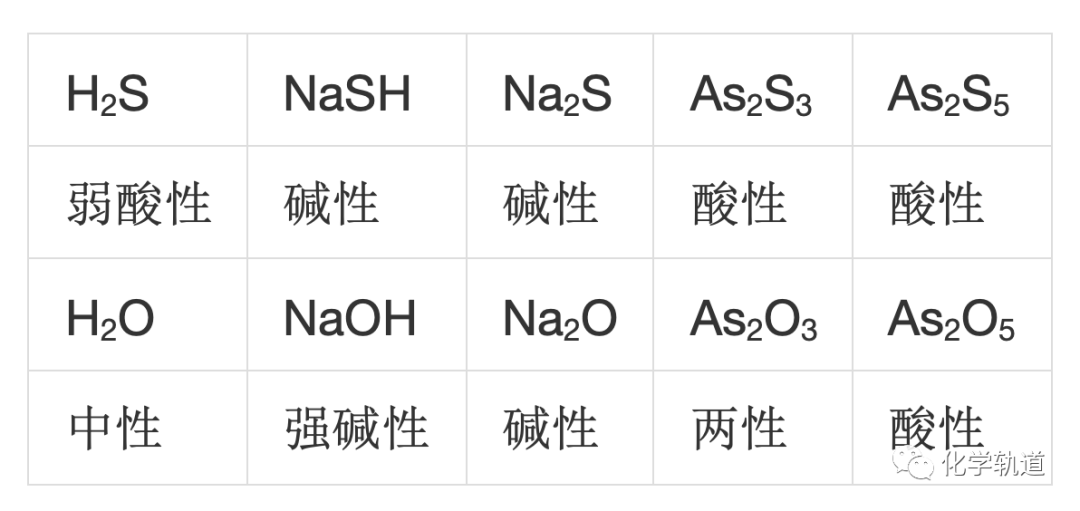Sulfide solubility
QQ Academic Group: 1092348845
Detailed
01 Sulfide
Sulfide refers to a binary compound formed by sulfur and element atoms with smaller electronegativity than it, and can be divided into non-metal sulfide and metal sulfide.
Two kinds of non-metallic sulfides are combined by covalent bonds. They are mostly molecular crystals with a low melting point. They are gas or liquid at room temperature, such as CS2; some non-metallic sulfides, such as SiS2, are mixed crystals with relatively high melting points. high. Polar molecular crystals are soluble in water, while non-polar molecular crystals and mixed crystals are difficult to dissolve in water.
Metal sulfides are binary compounds formed by sulfur and metal elements, and can also be regarded as normal salts of hydrogen sulfide. Hydrogen sulfide (H2S) is a dibasic weak acid, Ka1=1.07×10-7, Ka2=1.26×10-13, which can form normal salt and acid salt; therefore, its normal salt is a weak acid salt or sulfide. The view of proton acid-base theory is a strong base.
02 Metal sulfide
There are many kinds of metal elements, so the sulfides formed are also colorful, especially their solubility and color are different.
In 1829, the German Ross proposed a qualitative analysis method for hydrogen sulfide system. This system reflects the production and scientific achievements at that time, and once played a very active role in the system of precipitation separation and identification.
With the development of instrumental analysis methods, hydrogen sulfide system analysis has been gradually replaced, but it is still an important basis for understanding inorganic chemical phenomena, especially the solubility of metal sulfides is a connecting line between inorganic chemical principles and elemental chemical phenomena. It is also a witness point for the experimental guidance of inorganic chemistry theory.
1. The solubility of metal sulfides
2. Explanation of the solubility of metal sulfides-the properties of metal sulfides
The dissolution of substances is mainly due to two reasons: similar dissolution and similarity and chemical reaction between solute and solvent. Chemical reactions include acid-base reaction, redox reaction, coordination reaction and so on.
Figure 1 Diagram of the dissolution principle of metal sulfides
1. Polarity of metal sulfides

S is located in group VIA of the third period, below the oxygen, so the properties of sulfides have strong similarities with oxides of the same metal.
However, S2- has a larger radius than O2- and has strong deformability. When it is combined with metal ions, it is prone to ion polarization and the ionic bond formed between metal ions and S2- is weakened and transformed into a covalent bond, especially the polarization force. The metal ions of the 18e and 18+2e configurations with great deformability and sulfide tend to be covalent bonds. Therefore, the sulfide of the same metal element has less solubility, darker color, and lower boiling point than oxides, such as Al2O3. White, melting point 2318K; while Al2S3 is yellow, melting point 1373K.
IA metal ions are all cations in the 8e configuration, with weak polarization and deformability, forming ionic sulfides, so they are all easily soluble in water (see Table 1-line 1).
2. Acidity and alkalinity of sulfide

(1) Acid sulfide and alkaline sulfide
According to the reaction with acid or base, oxides can be divided into acidic oxides and basic oxides. Similarly, sulfides are also divided into acid sulfides and alkaline sulfides.
Table 2 Acidity and basicity of sulfide and oxide

(2) The acid-base change rule of sulfide
From the periodic table of elements, the overall gradient of acidity and alkalinity of sulfides is the same as that of oxides.
--- The sulfide with the highest oxidation state in the same cycle increases acidity from left to right;
--- The sulfides of the same family and the same oxidation state increase the alkalinity from top to bottom.
--- High-priced sulfides with the same element and different valence are more acidic.
Therefore, As2S5 is more acidic than Sb2S5, while Sb2S5 is more acidic than SnS2 and Sb2S3.
The difference is that sulfides are more acidic than their corresponding oxides. E.g:
Table 3 Acid-base comparison of sulfide and oxide

According to the principle of acid-base reaction, acid sulfides or amphoteric sulfides As2S3, As2S5, Sb2S3, Sb2S5, SnS2 are soluble in alkali (NaOH) and alkaline sulfides (Na2S).
As2S3+3Na2S === 2Na3AsS3. (Sodium thioarsenate)
Na3AsS3 is a salt formed by replacing O in oxo acid with S, which is unstable and can react with water
Na3AsS3+6H2O === 2H3AsS3+6NaOH
2H3AsS3 ==== 3H2S↑+As2S3
Na3AsS3+6H2O === 3H2S↑+As2S3↓+6NaOH
(3) Calculation of the acidity required to dissolve metal sulfides
The direction of acid-base reaction is strong acid + strong base === weak base + weak acid, FeS+2HCl === FeCl2+H2S


3. Reduction of sulfide
S2- in sulfide is in the lowest oxidation state and can be oxidized by strong oxidizing agents. Therefore, sulfide that is insoluble in concentrated non-oxidizing acids can be oxidized and then dissolved by oxidizing acids such as nitric acid (see Table 1 to row 4).
3CuS+8HNO3 === 3Cu(NO3)2+3S↓+2NO↑+4H2O
Similarly, if the metal cation forming the sulfide has reducing properties, it can be dissolved in an oxidizing acid. Metals (As, Sb, Bi, Ge, Sn, Pb, Ga, In, Tl) located below the fourth period of the p zone generally show two common oxidation states, the highest valence state is the group valence (the highest oxidation state) And the oxidation number 2 lower than the group valence (inert electron pair effect), such as As (Ⅴ, Ⅲ), Ge (Ⅳ, Ⅱ), In (Ⅲ, Ⅰ). Therefore, low-valence sulfides such as As2S3, Sb2S3, SnS, etc. can be dissolved in oxidizing solvents.
From the perspective of oxidants, in addition to oxidizing acids, alkali metal sulfides can dissolve excess elemental sulfur to form polysulfides. Polysulfides have oxidizing properties, so low-valence metal sulfides can be dissolved in sodium polysulfide and polysulfide. Polysulfides such as ammonium (see Table 1 to row 8).
4. Coordination of sulfide (Hg)
For sulfides with extremely small Kspθ, simple oxidizing acids cannot dissolve them, so a two-pronged approach is required. For example, HgS can only be dissolved in aqua regia (see Table 1 to row 5).
3HgS+2HNO3+12HCl ===3H2[HgCl4]+3S↓+2NO↑+4H2O
Aqua regia (HNO3: HCl = 1: 3), the strong oxidative oxidation of HNO3 S2- is elemental S. Cl- in HCl forms a stable complex with Hg2+ as a ligand [HgCl4]2-, making the reaction proceed to the right completely , HgS dissolves.
In this reaction, aqua regia provides strong acidity, strong oxidizing properties and coordination properties. Redox balance and coordination balance replace the precipitation balance of ordinary non-oxidizing acid-dissolved sulfides.
5. Sulfides Al2S3, Cr 2S3 that can only exist in dry state
H2S is a weak acid. S2- is alkaline when hydrolyzed in an aqueous solution. Al3+ and Cr3+ are easily hydrolyzed. Therefore, Al2S3 and Cr2S3 are hydrolyzed and precipitated out of the reaction system due to the anions and cations of Al2S3 and Cr2S3 in water, which promotes the complete hydrolysis. That is double hydrolysis, so there is no Al2S3, Cr 2S3 in the solution.
Cr2S3 + 3H2O === Cr(OH)3↓+ 3H2S↑
Al2S3 + 3H2O === Al (OH)3↓+ 3H2S↑
Al2S3 and Cr 2S3 can only be prepared in a dry state in the laboratory.
This information is sourced from the Internet for academic exchange only. If there is any infringement, please contact us to delete it immediately.
- Previous: Quantum dots light up
- Next: A Rising 2D Star: Nove


 Academic Frontier
Academic Frontier